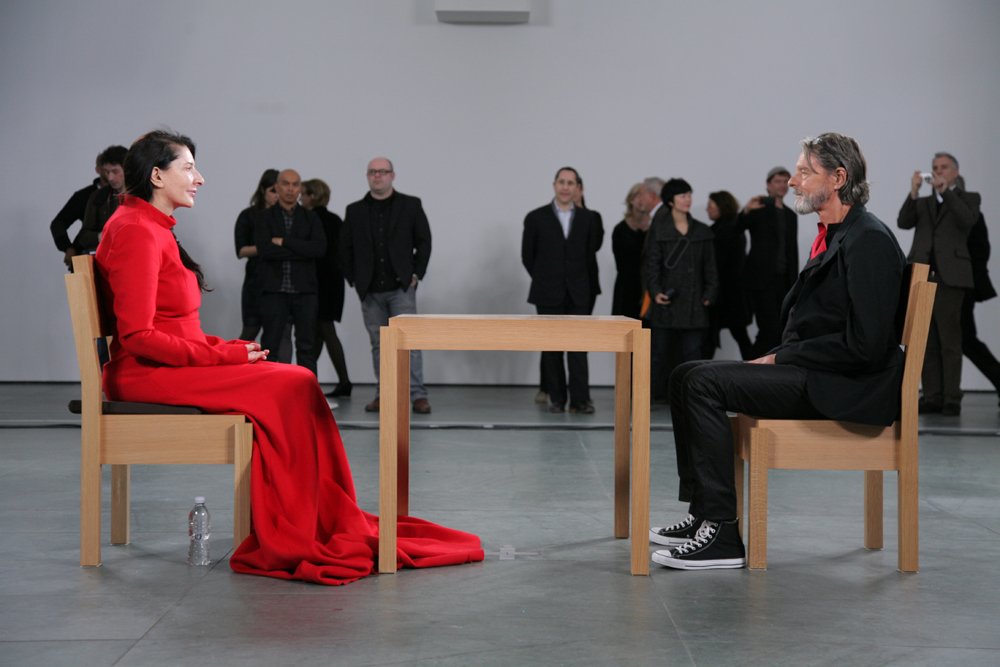Inspirational Women | International Women’s Day |
For the day that’s in it, I’ve decided to take a look at some inspirational women artists both past and present
Artemisia Gentileschi
Artemisia was a bit of a pioneer for women artists, and in fact was a total feminist before feminism was even a thing. In an era when women painters were not easily accepted by the artistic community or patrons, she was the first woman to become a member of the Accademia di Arte del Disegno in Florence and was a court painter under the patronage of the Medici family and Charles I. She also had a good relationship with Galileo Galilei, with whom she corresponded by letter. For a long time her personal life actually overshadowed her work. Not only was a woman painter a bit of an oddity at the time, she was also a rape survivor who succeeded in prosecuting her rapist, no easy feat in seventeenth century Italy, not to mention nowadays. Her most famous work is Judith Slaying Holofernes. Judith was a beautiful widow who beheads Holofernes, an Assyrian general. Holofernes was about to destroy Judith’s home, the city of Bethulia and Artemisia shows the moment when Judith, helped by her maid, holds him down and brutally cuts off his head. Fittingly, Artemisia used the face of her rapist as inspiration for Holofernes in this painting. Her works contain a strong sense of the importance of solidarity and unity between women and the violence of her work was seen as permissible in light of her past. There are in fact about fifty-seven known works by Artemisia Gentileschi and forty-nine feature women as protagonists or equal to men.
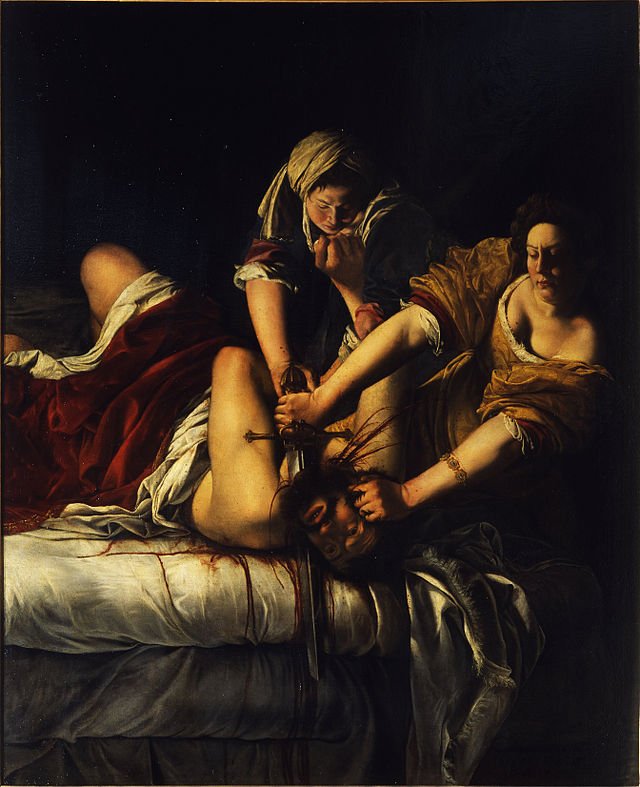
Berthe Morisot
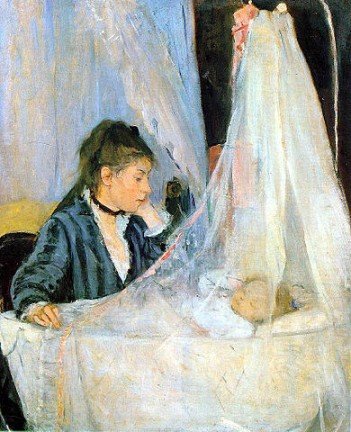
Berthe Morisot was an Impressionist painter whose bourgeois family actively encouraged her to pursue painting as a career, something quite rare in her day. She was extremely successful, showing in the Salon (something which her male contemporaries found difficult to achieve) right up until the first Impressionist exhibition in 1874. She befriended the painter Edouard Manet and married his brother Eugene, and she actively encouraged Manet to join her Impressionist circle along with painters like Monet, Degas, and Pissarro.
Like other female Impressionist painter Mary Cassatt, during her lifetime, Berthe Morisot was relegated to the category of “feminine” artists because of their usual subject matter — women, children, and domestic scenes. However, as a doctrinaire impressionist, Morisot painted what she saw in her immediate, everyday life. As a woman securely in the “haute bourgeoisie” she saw domestic interiors, holiday spots, other women, and children. Without exception, her subject matter shows the equivalent of that of her impressionist colleagues. Edgar Degas, the dandy male bourgeois, painted rehearsals of the ballet, horse races, and nude women in apartments (rather than studios). Claude Monet painted his garden, his children, and his neighbour’s haystacks. Female impressionists painted their social milieu in a way consistent with the impressionist approach to subject matter.

Judy Chicago
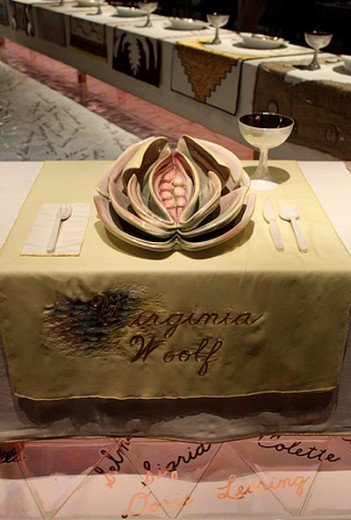
Judy Chicago (born Judith Sylvia Cohen) is an American feminist artist and writer known for her large collaborative art installation pieces which examine the role of women in history and culture. She changed her name after the death of her father and her first husband, choosing to disconnect from the idea of male dominated naming conventions and instead using her birthplace as her last name. By the 1970s, Chicago had coined the term “feminist art” and had founded the first feminist art program in the United States. Chicago’s work incorporates stereotypical women’s artistic skills, such as needlework, counterbalanced with stereotypical male skills such as welding and pyrotechnics. Chicago’s most famous work is The Dinner Party, which is in the collection of the Brooklyn Museum.
The Dinner Party comprises a massive ceremonial banquet, arranged on a triangular table with a total of thirty-nine place settings, each commemorating an important woman from history. The settings consist of embroidered runners, gold chalices and utensils, and china-painted porcelain plates with raised central motifs that are based on vulvar and butterfly forms and rendered in styles appropriate to the individual women being honoured. The names of another 999 women are inscribed in gold on the white tile floor below the triangular table. This permanent installation is enhanced by rotating Herstory Gallery exhibitions relating to the 1,038 women honoured at the table. (via The Brooklyn Museum)
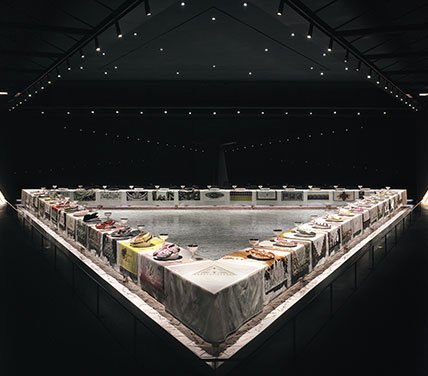
Guerilla Girls

A group of anonymous feminists in 1985 banded together to create the group known as the Guerilla Girls, and took as their mascot, a gorilla mask. The group members use the names of dead female artists like Frida Kahlo, Eva Hesse, Paula Modersohn-Becker, Käthe Kollwitz, Gertrude Stein, Georgia O’Keeffe.
The group uses posters and postcard as well as public appearances to address the issue that women and non-whites are being excluded from the art world.
In 20 years they have produced over 100 posters, stickers, books, printed projects, and actions that expose sexism and racism in politics, the art world, film and the culture at large.
Kara Walker
Kara Walker is a contemporary African-American artist who explores race, gender, sexuality, violence and identity in her work. She is best known for her room-size tableaux of black cut-paper silhouettes.Walker first came to art world attention in 1994 with her mural Gone, An Historical Romance of a Civil War as It Occurred Between the Dusky Thighs of One Young Negress and Her Heart. This unusual cut-paper silhouette mural, presenting an old-timey south filled with sex and slavery was an instant hit. At the age of 27 she became the second youngest recipient of the coveted MacArthur Foundation’s “genius” grant.
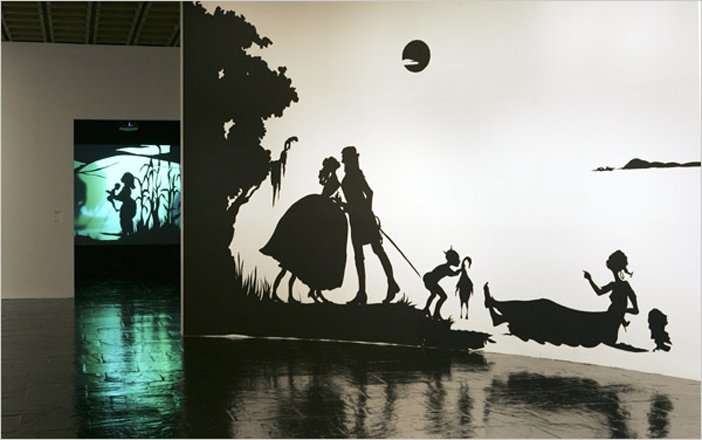
Walker’s silhouette images work to bridge unfinished folklore in the Antebellum South, raising identity and gender issues for African American women in particular. In May 2014, Walker debuted her first sculpture, a monumental piece entitled A Subtlety, or the Marvelous Sugar Baby, an Homage to the unpaid and overworked Artisans who have refined our Sweet tastes from the cane fields to the Kitchens of the New World on the Occasion of the demolition of the Domino Sugar Refining Plant. The massive work was installed in the disused Domino Sugar Refinery in Brooklyn and commissioned by Creative Time. The exhibition consisted of a giant female sphinx, measuring approximately 80-feet long by 40-feet high, and several life-size child-like figures, dubbed attendants. The sphinx was made by covering a polystyrene core with machine-cut blocks of white sugar, which were then further cut by hand and smoothed with a sugar slurry. Domino donated 80 tons of sugar for Walker’s piece. The piece linked the history of slaves working in sugar plantations with the space it is exhibited in.
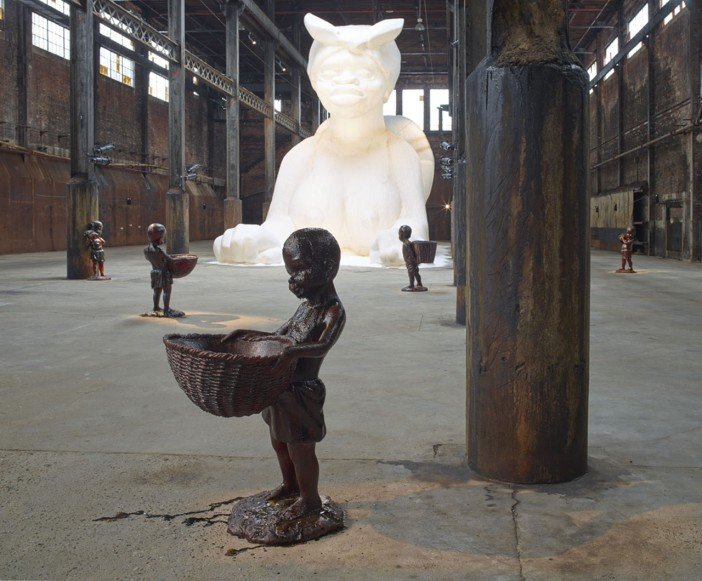
Marina Abramovic
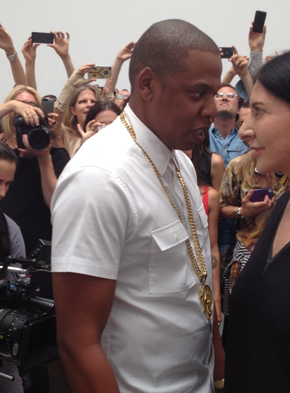
Marina Abramovic is a Serbian (formerly Yugoslavia) artist based in New York, a performance artist who began her career in the early 1970s. Her work explores the relationship between performer and audience, the limits of the body, and the possibilities of the mind. Active for over three decades, she has been described as the “grandmother of performance art.” From March 14 to May 31, 2010, the Museum of Modern Art held a major retrospective and performance recreation of Abramovic’s work, the biggest exhibition of performance art in MoMA’s history. During the run of the exhibition, Abramovic performed “The Artist Is Present,” a 736-hour and 30-minute static, silent piece, in which she sat immobile in the museum’s atrium while spectators were invited to take turns sitting opposite her. She said the show changed her life “completely” and claimed that the fact that Lady Gaga came to see it helped boost her popularity among a younger generation. The whole piece was a test of her endurance, where she sat for the 736 hours without a break. Abramovic attended rapper Jay-Z’s take on her work, The Rapper is Present, where he performed his rap Picasso Baby for six hours at Pace Gallery in Chelsea, NY. It was quite different to Abramovics’ work in that Jay-Z took frequent breaks and the energy levels were quite different, Abramovic said, “I had no idea what I was going to do. I just came here and felt the energy. I love his music, because it’s social issues, it’s political, and really goes to everybody’s heart. It’s so good. It’s like a volcano.”
